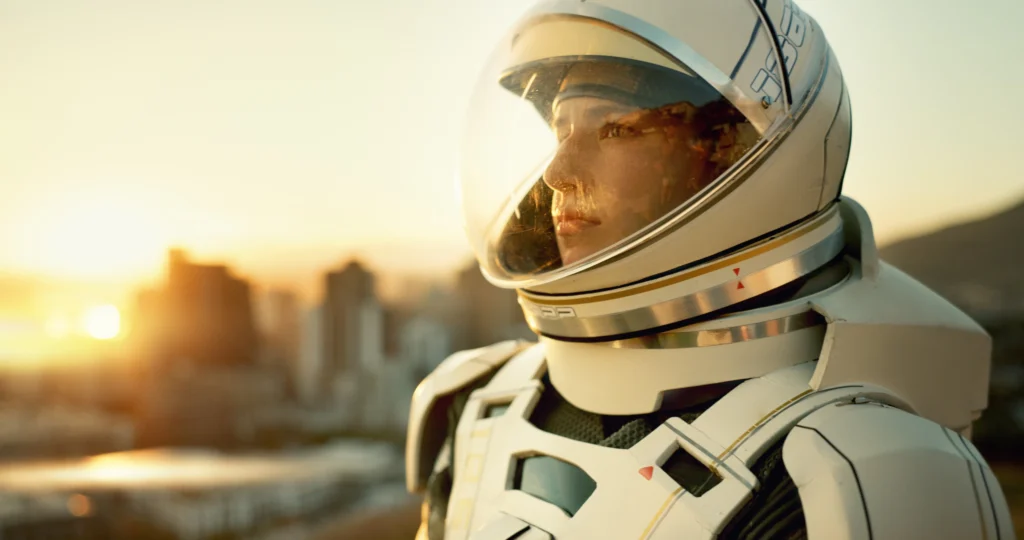
Science fiction films have always fascinated audiences with futuristic worlds, alien civilizations, and advanced technology. A significant part of this appeal comes from the visual elements, including typography, that create an immersive experience. Sci-fi movie posters, in particular, use distinct fonts that evoke curiosity, mystery, and excitement about the unknown. In this article, we’ll explore some of the most iconic fonts used in sci-fi movie posters and examine how typography helps set the tone for these groundbreaking films.
Typography plays a crucial role in shaping the visual identity of a sci-fi film. It establishes the genre, tone, and mood even before viewers watch the movie. The right font can communicate futuristic settings, otherworldly elements, or dystopian themes, while the wrong font can confuse the audience about the film’s nature.
Fonts used in sci-fi movie posters often follow these key themes:
Each of these font styles contributes to creating the right atmosphere for a sci-fi film, signaling to the audience what kind of experience they can expect.
The typography used in the original “Star Wars” (1977) is one of the most recognized in cinematic history. The title font, known as “Star Jedi,” is a bold, geometric sans-serif typeface that conveys a futuristic and adventurous feel. The all-caps design with wide lettering and subtle slants helps project the expansive and action-packed nature of the film’s universe.
Additionally, the opening crawl’s typeface uses a variation of “News Gothic,” a simple and legible font designed for long passages of text. This font grounds the audience in the epic, otherworldly setting while maintaining clarity.
“Blade Runner” is a seminal sci-fi film known for its dark, dystopian aesthetic. The typography on the movie poster reflects this, using a font that is both mechanical and weathered. The title font, called “Blade Runner,” features sharp, angular lines that evoke a futuristic yet decayed world. The letters appear slightly jagged, reflecting the harshness of the film’s cyberpunk environment.
The font’s distressed quality reinforces the film’s themes of decay and technological degradation, providing viewers with a sense of the gritty future depicted in the movie.
The font used in “Alien” (1979) is minimalistic yet terrifying. The film’s title uses a spaced-out sans-serif font, giving each letter plenty of breathing room. This choice conveys isolation and danger, echoing the film’s plot of a lone alien creature stalking a group of astronauts.
By spacing the letters so far apart, the font suggests something foreign and unknown, creating a sense of unease in the viewer. This typographical approach is effective in hinting at the film’s tension-filled atmosphere.
“The Matrix” (1999) is another iconic sci-fi movie with a unique typographic style. The movie poster features a bold, distorted font that plays into the film’s central themes of virtual reality and technological control. The title font, known as “Matrix Regular,” has a digital, glitchy appearance with random broken lines running through the characters.
This glitchy look reflects the film’s storyline, where reality is manipulated and distorted by a computer system. The font’s broken, jagged edges hint at the fragile nature of the constructed reality within the Matrix.
The 2021 adaptation of “Dune” uses a sleek, modern font that conveys both elegance and futurism. The title font is a customized version of “Dune,” characterized by its flowing, curved letters that resemble sand dunes. The minimalist design of the letters echoes the barren, desert landscapes of the film’s setting.
By using smooth curves and a minimalist approach, the font strikes a balance between futuristic design and the timeless nature of the story, creating a visually arresting title that is both modern and reflective of the film’s themes.
When analyzing fonts used in sci-fi movie posters, several common characteristics emerge. These traits are often chosen to reflect the futuristic or otherworldly nature of the film:
As sci-fi films have evolved, so have the fonts used in their promotional material. Early sci-fi films like “Metropolis” (1927) used heavily stylized, Art Deco-inspired fonts that reflected the futuristic optimism of the era. In contrast, modern sci-fi films tend to favor sleek, minimalist fonts that communicate a clean, high-tech future.
The 1980s saw the rise of the cyberpunk genre, which introduced grittier, more mechanical-looking fonts like those used in “Blade Runner” and “Robocop” (1987). These fonts reflected the dark, dystopian futures that these films depicted. More recently, films like “Ex Machina” (2014) and “Arrival” (2016) have embraced minimalist, abstract fonts that leave much to the imagination.
Fonts are a critical aspect of the visual storytelling in sci-fi movie posters. From the bold, adventurous typography of “Star Wars” to the glitchy, digital fonts of “The Matrix,” each typeface is carefully chosen to reflect the film’s themes and immerse the audience in its world. As sci-fi films continue to evolve, so too will the fonts that define them, offering new ways to engage viewers and communicate the futuristic and otherworldly experiences that lie ahead.
Whether minimalist or highly stylized, the fonts used in sci-fi movie posters serve as an essential bridge between the film and its audience, setting the tone for the cinematic journey to come.